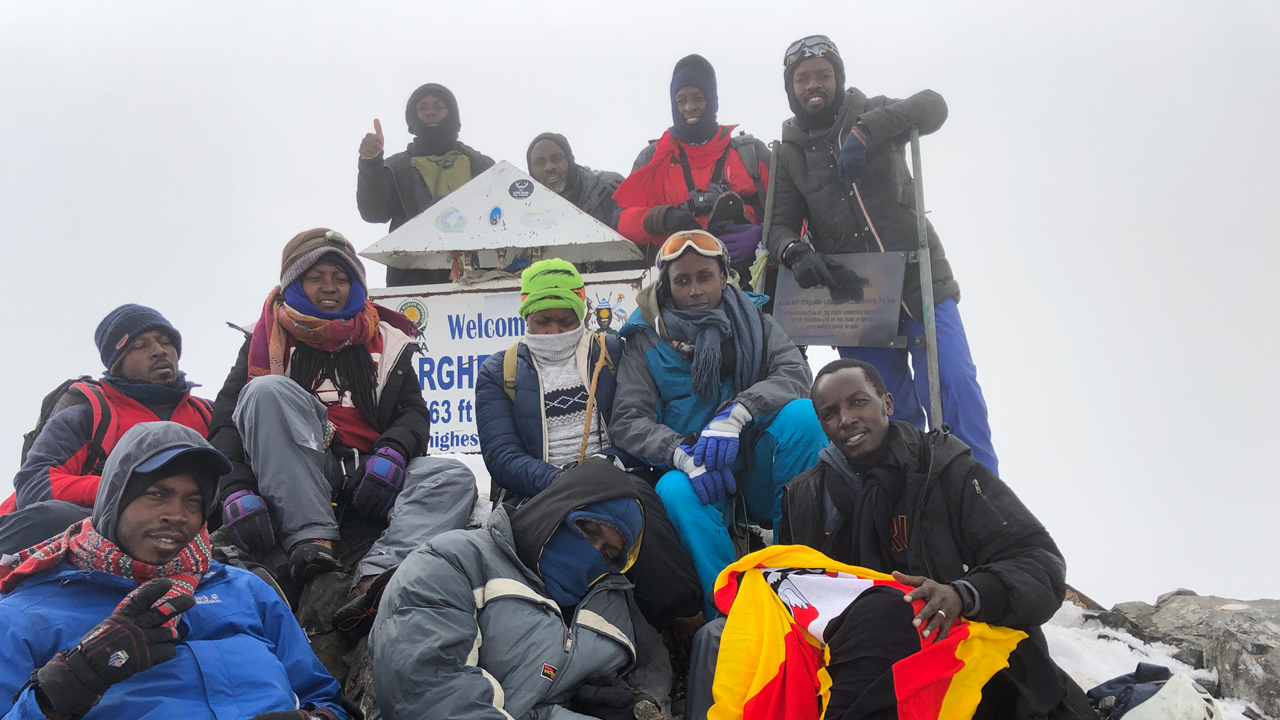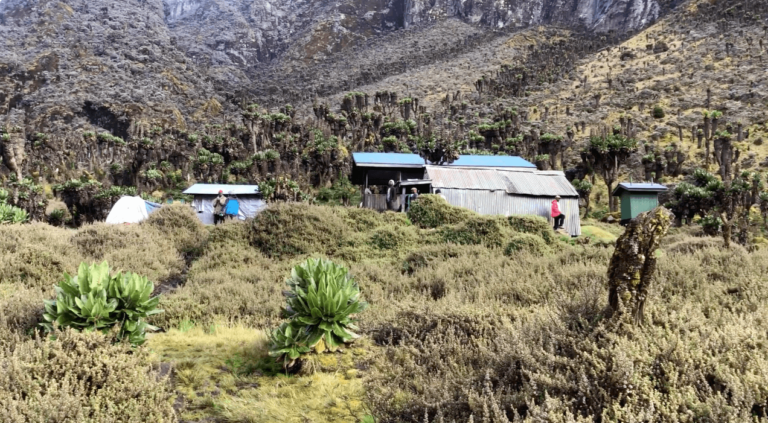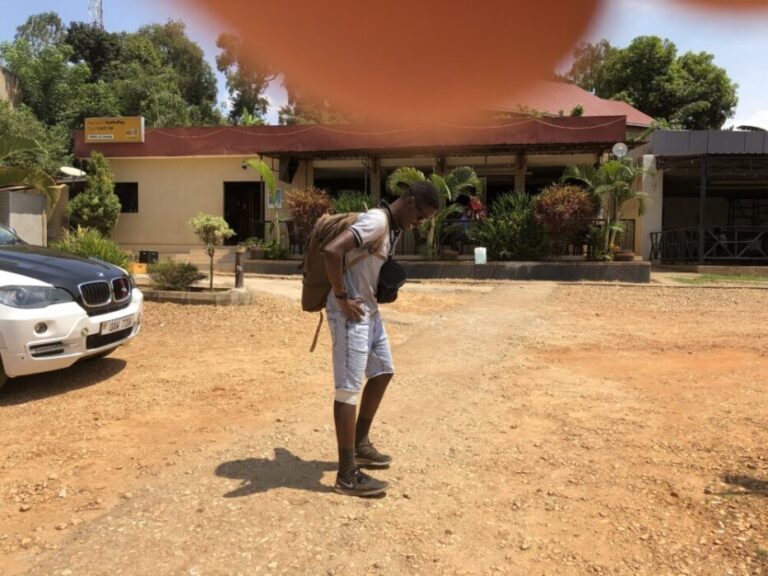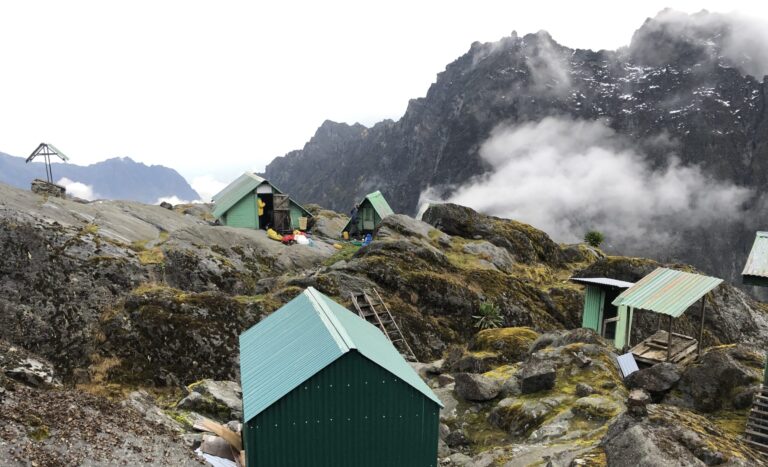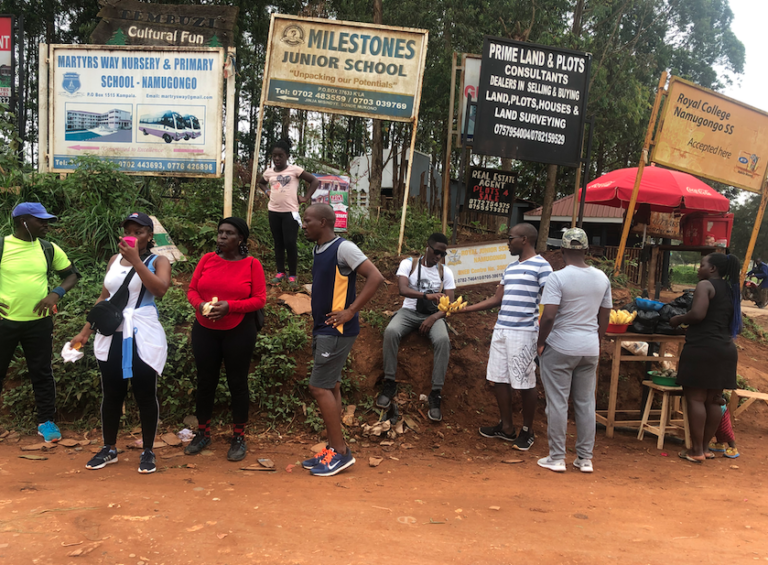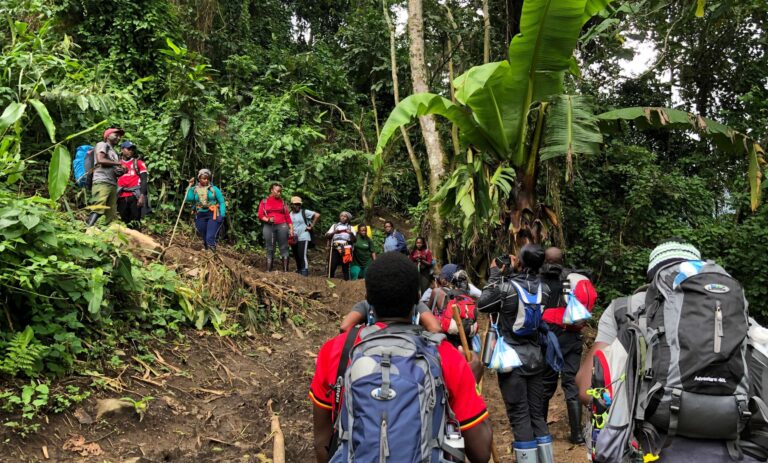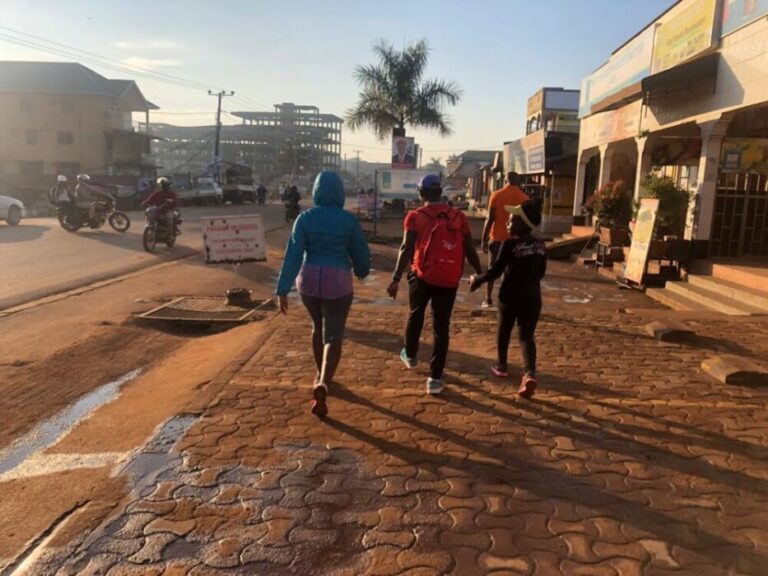I know, you’re there imagining what it’s like to trek to Margherita Peak – the highest peak on the Rwenzori Mountain ranges. You are imagining the technicalities, the snow, the glaciers, the rocks, the cold, the dressing or simply how it looks like up there at the peak. Well, I’ve got all your questions answered in this blog.
Got no time to read 2000+ words, here is a video summarising the trek from Elena Hut to the Margherita Peak. Let’s roll…
Video version of our trek from camp Elena 4970m ASL to Margherita peak 5109m ASL
Just like any other day, summit day came through. Having slept for barely three hours the previous night, I found myself awake, just like a number of colleagues on the trek.
The previous night was characterised with coldness, fatigue and summit anxiety. We were pumped and didn’t know what to expect. None of us hikers had any prior experience climbing a mountain this high. All we had were stories and imaginations, like any person who has never hiked a mountain this high!
About an hour before we set off, I found myself too weak to stand. I lost my appetite and felt dizzy with little headaches. I later learnt from my guide that these were signs of altitude sickness. I’ve written about this in my day 4 blog but to cut the long story short, I got an altitude sickness tablet from a colleague and had a 30 minutes’ rest before setting off for the summit.
The tablet and the rest worked for me cause I was back on my feet. However, altitude sickness could have a major impact on you and guides always advise you descend to a camp of lower altitude.
Anyway, by this time, everyone was awake and putting together every nut and bolt of what they needed before embarking on the summit trek.
Summit day must-haves
There are a number of items you need to have with you as you go for the summit. Beside the mandatory warm equipment, waterproof jacket, gloves, waterproof hiking boots, snow glasses, crampons, ice axel and harness, the other must-haves are; a water bottle and or bladder and a head torch. These really come in handy, speaking from experience.
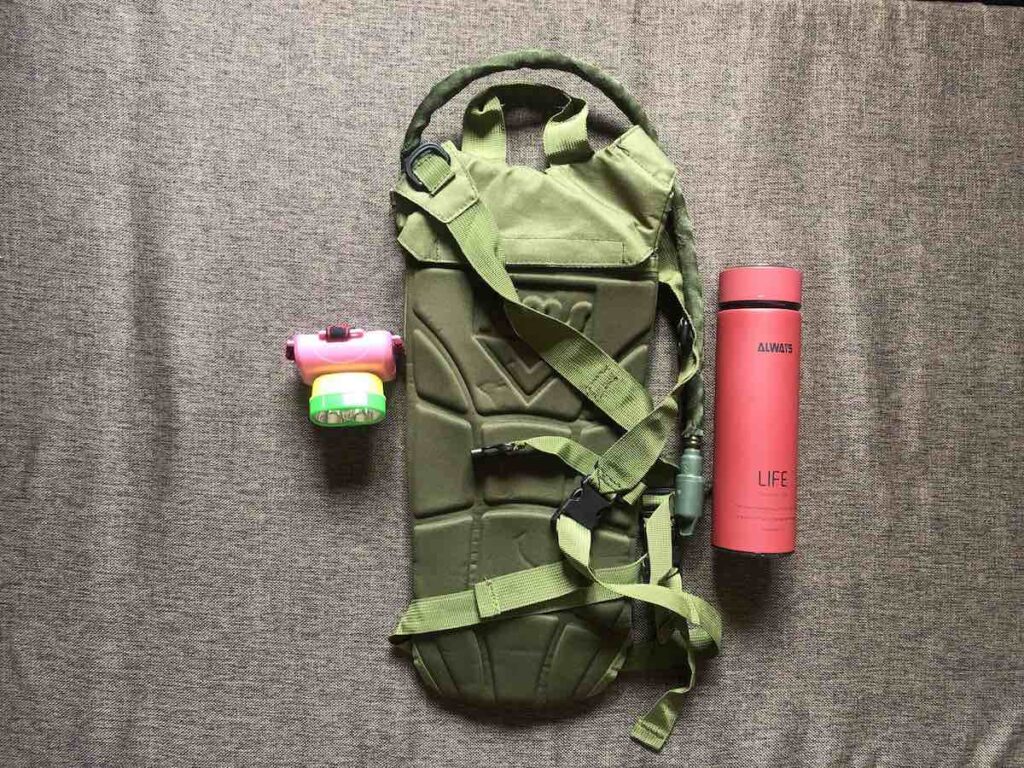
Since you’re at a higher altitude with less oxygen, you’ll take more breaths than you do at lower altitudes and this is where water becomes vital. You’ll feel your respiration rate going up hence your body will lose water way faster than it does at sea level.
When your body is working harder and you’re breathing harder, the body will use up more water, hence your need for a lot of water at high altitude. By the way, you can drink water anywhere on Mt. Rwenzori. Simply find a stream (which is very easy as there are many), collect the water and drink. The water in the streams is clean, cold and healthy.
On the other hand, the head torch will help you as you trek the rocks from Elena Hut since hikers set off somewhere between 2:00am to 4:00 am in the morning. You’ll need your head torch as a source of light for those 3 to 4 hours before the day breaks and the sun comes out.
Setting off for Margherita Peak.
The guides helped us get ready with all that we need before setting off, and made sure that everything was as it should. My guide, Alfred, assisted me to fix my head torch as it’s strap was in pieces. I watched him grapple with fixing it! He succeeded.
He later dressed me up in a harness that fitted me well. Yes, the one I had earlier didn’t fit because by the summit day, I had more layers of clothes on rendering it useless. So Alfred and Herbert, the chief guide, managed to get me a quick replacement.
Upon getting set up with other hikers, we set off. The Margerrita Peak was our destination. I was not that strong yet but I had come to peace with myself that I was going to the summit. For as long as I could hold myself up, that was my resolve, to get there.
From Elena, we started with some extremely challenging section! Using a rope was the only way we could ascend and get past some huge rocks.
A thin line of lights formed at the back as instructions from guides echoed from the front and the back (see from 01:40 in the video). Climbers were more than committed to taking this on. The team of climbers was more bonded than ever with everyone being supportive to the other in every way they could.
“Come on” , “I’ve got you” , “It is clear” , “You can make it” , “I’m watching over” were among the many encouraging statements the climbers said to one another.
At one moment, about two hours in, I only concentrated on listening to my body and taking it slowly with all needed breaks whenever I felt worn out or felt a bit of a headache.
Stanley Glacier
Before long, at sunrise, we sighted the Stanley Glacier!
Well, this was another wow moment for us. We couldn’t believe what stood ahead of us. The Stanley Glacier was so beautiful, white, clean and with no marks of a previous trek. Cameras and phones were pulled out as everyone wanted to take this opportunity of a lifetime, – to get their very first snow pictures, moreover in Uganda!
We got to the glacier, and by this time, the sun was out and the sky was clearer than I could ever imagine.
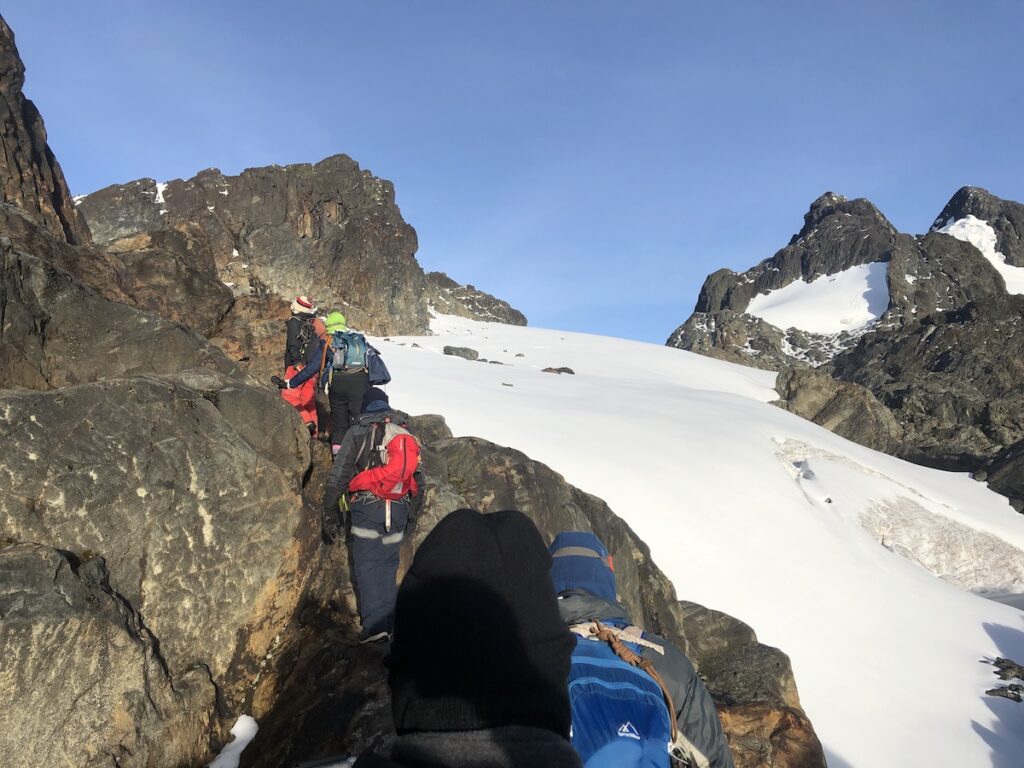
This was the time we all had smiles on our faces. We paused, took pictures in different poses and I even recorded short videos of other climbers. The guides were very patient with us and they gave us all the time we needed to take pictures eventhough they knew that we’re out of time.
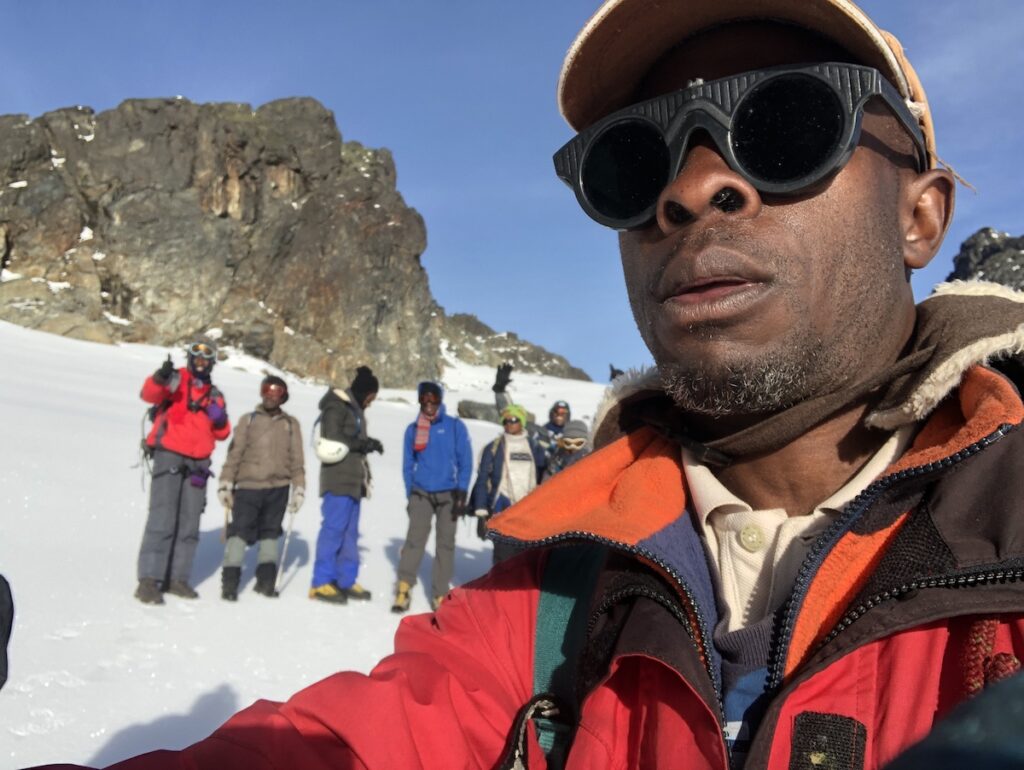
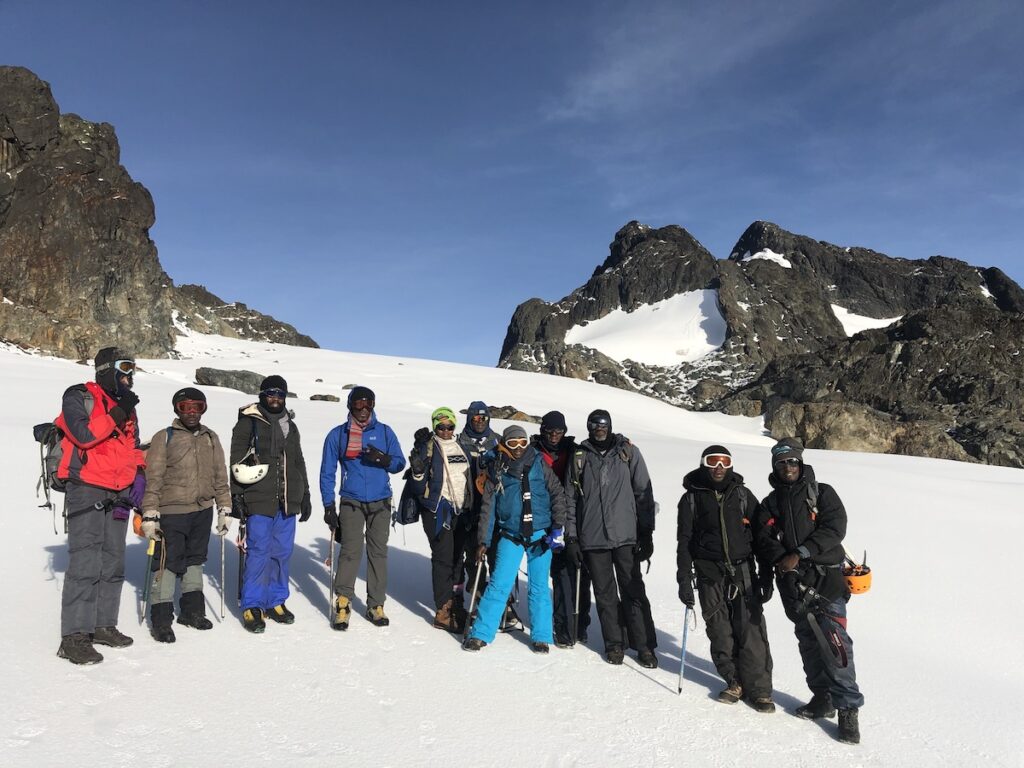
After all was done, we continued ascending. We attacked another rocky section just after the Stanley Glacier and the ropes re-surfaced.
Guys, ascending a mountain doesn’t mean you’re simply going uphill all through. No, there will be sections you descend, and then ascend. In fact, as we ascended to the summit, there were times we spent over an hour descending gigantic rocks before we could go up again on others!. It’s not all roses, but, it’s worth every effort.
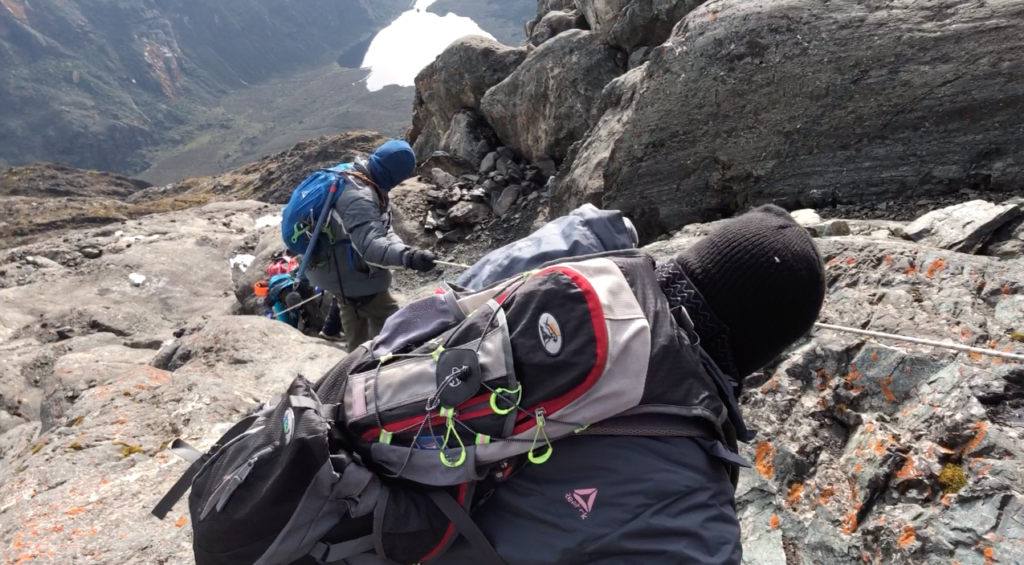
Here’s an important thing to note; as you climb a mountain, always listen to your body. Take a pace you can manage without feeling like you’re being left at the back. Also, the guide is your friend so talk to him and share how you feel. If you need to rest, he or she will listen and let it be. Thanks to these amazing humans.
The Margherita Glacier.
Well, this blog can’t be complete if I don’t share my experience reaching the Margherita Glacier. This one surfaces a few meters before you reach the summit.
Trekking the Margeritah glacier is one of the most amazing experiences you’ll have when climbing Mountain Rwenzori. However, by the time you reach it, you are either too fatigued, too hungry, too cold or all of them combined.
At the start of the ascend to the Margherita Glacier, we had already trekked for about 10 hours. I was in good spirits but something happened.
You see, when trekking up this glacier, climbers are tied to a rope as a safety measure. However, the person at the front sets the pace for the rest of climbers behind him or her. It won’t matter how fast you can go as a person. So if the clmbers you’re tied with have a good pace, with a good pace you’ll ascend and if their pace isn’t good, the reverse is true.
In my case, I was on a rope with all the other climbers we were at the back with. We could barely make four steps forward minus a two or three minutes’ break. It was a daunting task.
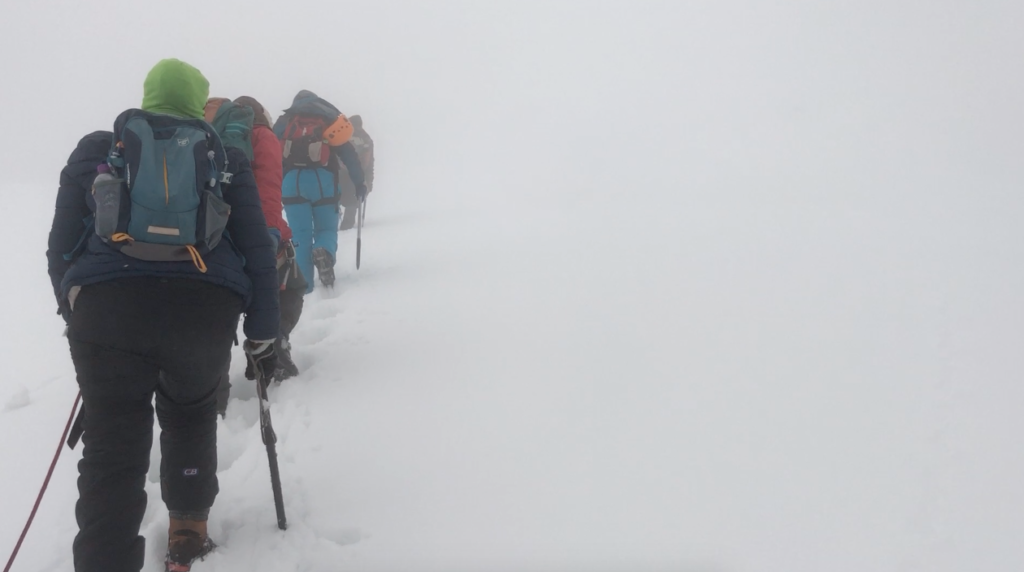
There’s nothing bad about making four steps and taking a rest. The flip side is that you will take long in the snow and when you take long in this snow trek, your hiking boots start getting wet and when they do, it will get extremely hard for you to descend.
Secondly, the longer your breaks are, the longer your trek will be and the more you’ll get fatigued.
Thirdly, anything can happen at this glacier like the rain starting or fog covering evrything over. With these, it gets even more challenging to ascend. At some point, fog covered the team that was at the front and the guides were considering whether or not to have the rest of us descend to a snow-free zone.
By this time, we had spent nearly two hours in the snow at the Margherita Glacier. To make matters worse, some hikers had started dozing off as we ascended the glacier. That someone can doze when in snow is unthinkable but well, it happens!
Reaching the Summit – Margherita Peak. Yay!
After the snow trek at the glacier, you get to an extremely challenging section. It is so steep, narrow and rocky but it is the only way to go to the summit. It is here that I witnessed a colleague fall and cling onto a cliff and it’s then that I came to realize how important the harness, ropes and helmet are in the mountains.
After this section, you’ll trek for another 30-40minutes before you reach the peak. Since it is very steep, you don’t spot the peak until you’re just minutes away from it. Here, I can’t fail to again thank the guides who go an extra mile to tie some climbers on ropes and come along with them up to the peak, like in the picture below.
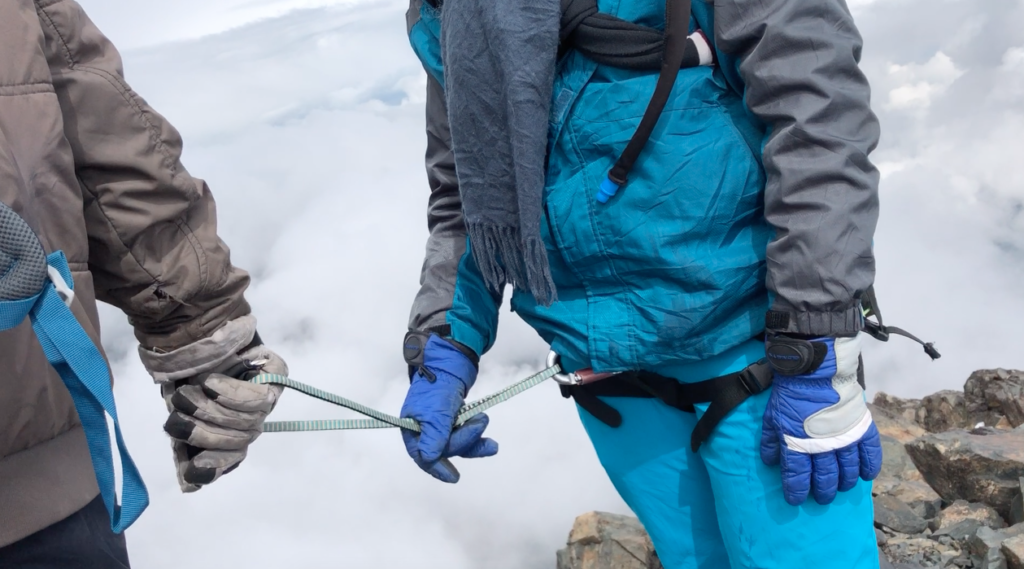
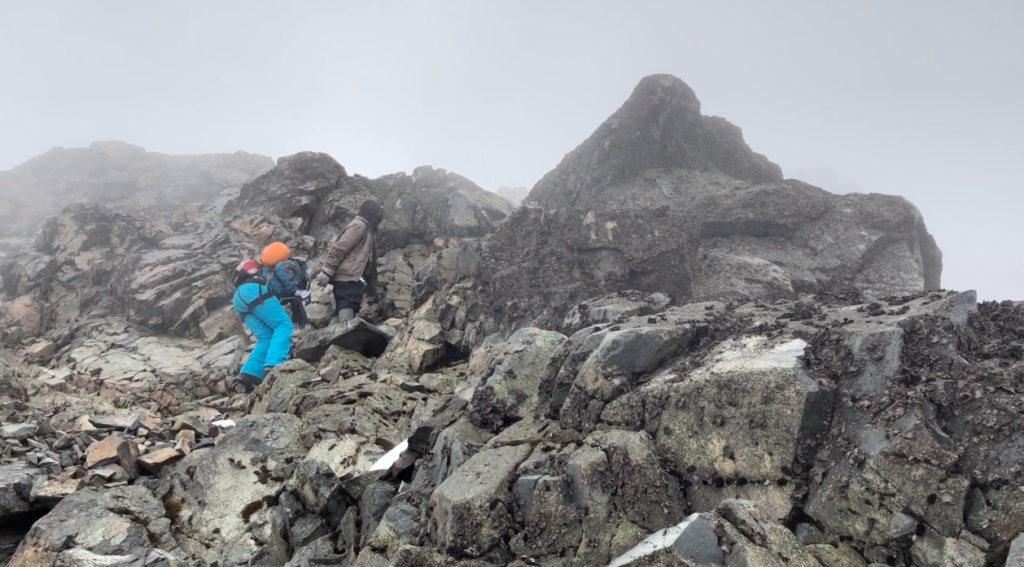
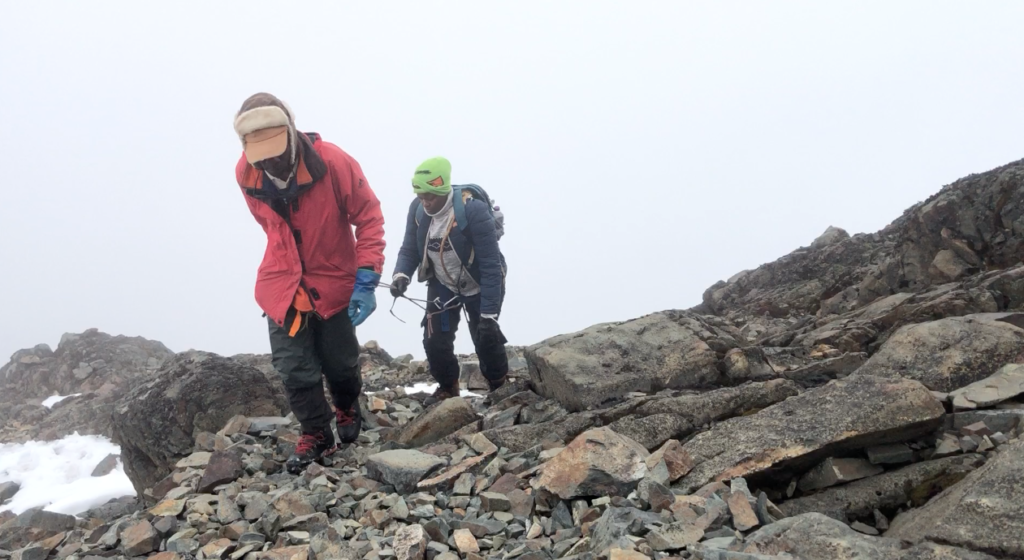
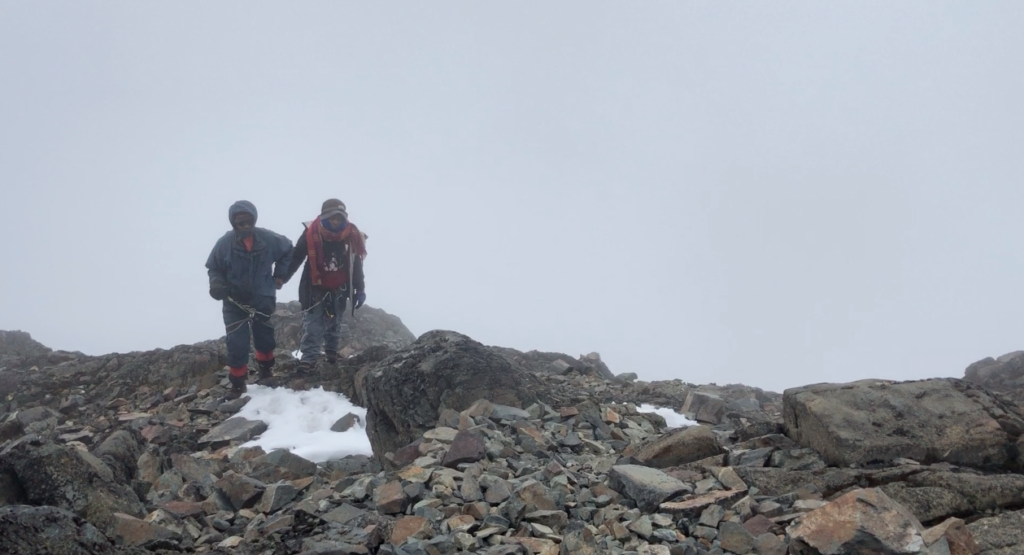
Other climbers reached a point of giving up just minutes before reaching the summit and I remember Jokas, one of the guides jokingly saying to a fellow climber, “if you stop here, we fight“. Meaning that no matter what, the guides wished for each of us to reach the summit.
Summiting the Margherita Peak.
After all was said and done, we got to the highest point in Uganda, the Margherita Peak, standing at a majestic 5109 meters above sea level (ASL). It is here that I witnessed how grateful everybody was. Tears of joy were all over. Hugs, smiles, cheers, laughter, gratitude and silence covered up the peak.
At this point, I realised how great it is to be with a team as you trek a mountain as challenging and high as the Rwenzori Mountain. There was a huge sense of togetherness, it felt like one big family.
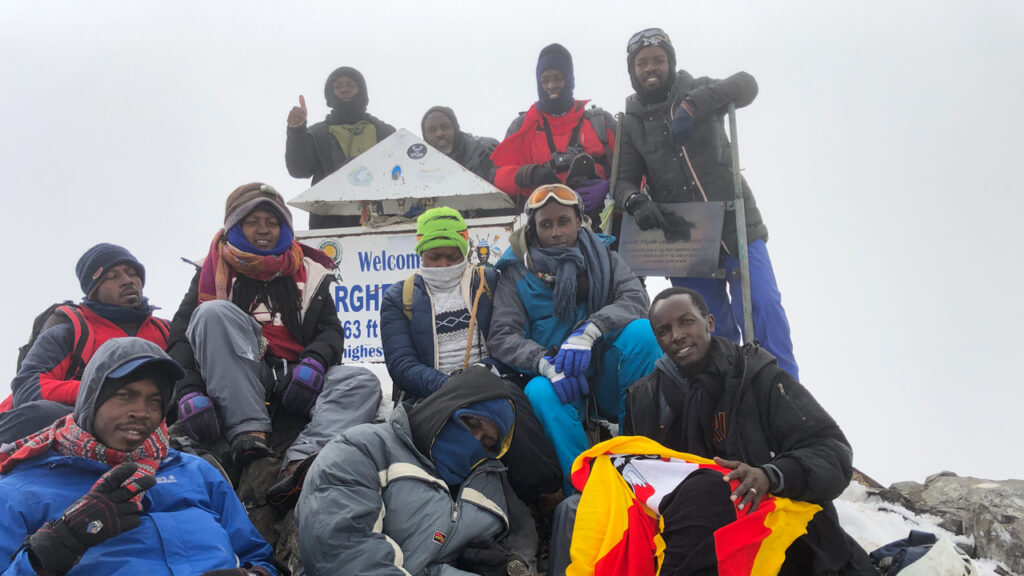
The cameras re-surfaced, video messages and photo moments took their share of our time at the peak. I personally took some time and recorded a thank you message for all the people that have been supportive to me and to those that donated to the cause , me giving back to the community.
When at the Margherita Peak, it can be extremely cold and the wind speed is high enough for you to feel it with your ears. But if it doesn’t rain, you can have a clear view of the surrounding peaks, a view of DR Congo as well as of the clouds below you. It is a pleasing experience and one to cherish for a lifetime.
It is NOT yet over until you descend
Reaching the highest point is “easy”. Descending it isn’t.
I don’t know why, but stories about descending the Margherita Peak aren’t out there. Personally, I found descending it more challenging and extremely tiring than the ascending it.
We spent nearly half an hour at the top. The guides then requested that we begin our descend. It is at this time that I began to realise how worn out my body was.
Remember we set off from Elena Camp/Hut at 4:00 am and my group summited (reached the summit) at 3:06 pm. That’s nearly 12 hours ascending this beast of a mountain with literally no food en route apart from snacking on some energy bars, a banana and drinking water or fruit juice. We had to descend back to Elena where we were to spend the night before we continuing with our descend.
For those who know me, when hunger strikes, I develop headaches and I seem not to be able to do anything else sensibly. And here I was, with a descend to do on an empty stomach.
So, I decided to descend with the first team. Sorry, had to leave behind the colleagues that I had climbed with from basecamp. I never wanted to pose any danger to myself or anyone else in case I could no longer walk or if my headaches got extreme.
Off we went, descending back to the mighty Margherita glacier. It is where this photo was taken.
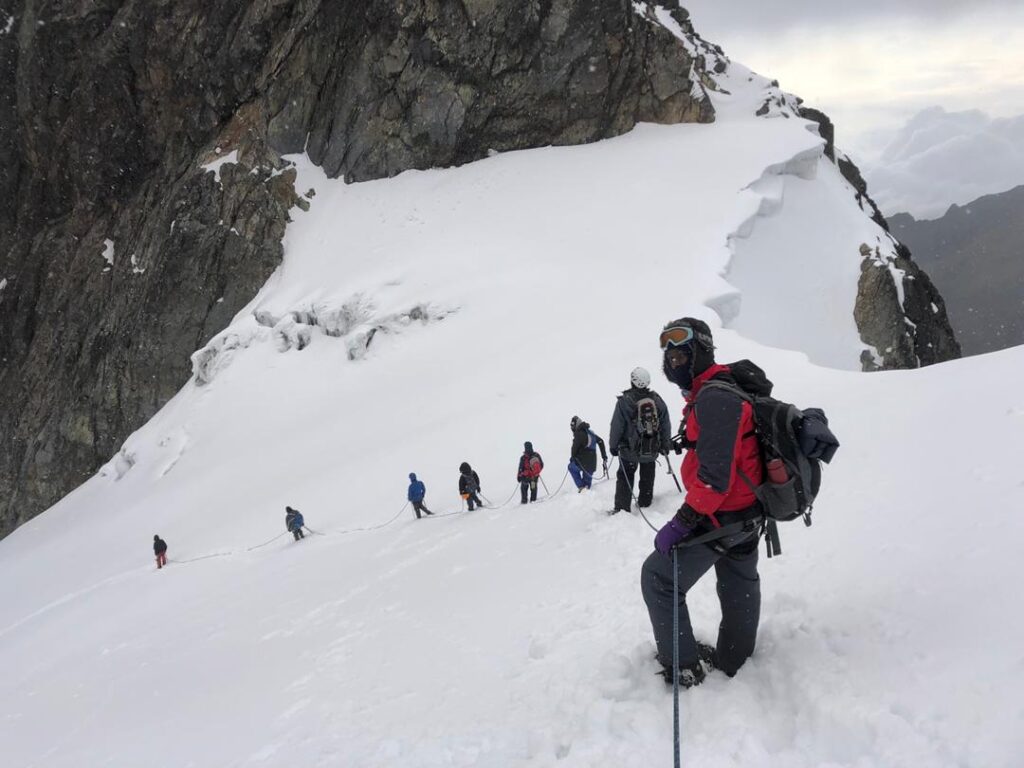
This photo looks beautiful and anyone would crave to get a photo of this kind. But, at this moment, I was only looking forward to getting back to the camp. I wished there was a way to get there faster. In fact, I didn’t even realise that a friend was taking it. This picture had been making rounds on social media before I spotted myself standing tall at the back, that’s when I realized what a gem it was!
With the headaches still on and the hunger fighting me down, the hiking boots had finally gotten wet and cold. After the Margherita Glacier descend, I had to switch and wear another pair of socks that I had in the backpack. Thank God I had somehow convinced myself in the morning to pack an extra pair.
It was at this moment that I had to make peace with myself and descend this mountain without rush or panic. I let it take me all the time I needed as long as I got to the camp safe.
The descend continued and before I knew, one of the hikers I ascended with got an asthma exacerbation. By now the coldness was hitting in and darkness was falling. It was the worst news I got as we descended to Elena Hut. Thankfully, she was helped by a guide who happened to locate her inhaler spray.
Friends, you take the same route while descending Mt. Rwenzori and that means re-doing all the challenges you did as you ascended. Yes, we all wished there was an alternative, a shorter route to Elena camp, but nope, there wasn’t any!
Thankfully, before we knew, two porters surfaced with flasks of tea and biscuits. We were not even half way the journey back to Elena camp but I tell you, this was such a booster for us. To sit down and take a cup of tea, to warm us up and give us some sugars to keep us going was like a miracle.
In short, we all got back to Elena camp safe. Our group arrived at half past 8 in the night and the last group arrived at 10:00 pm. It was such a long tiring day for everyone, but one thing that kept us going was the fact that we had all accomplished something. We were also strong as a team. That couldn’t be disputed.
Closing Remarks
Summiting a mountain as challenging as Mt. Rwenzori is one thing I’ll forever be proud of. However, I don’t think this could have been possible without the help of the guides, porters and an extremely amazing team that took the trek beyond self.
Anyone looking forward to summiting Mt. Rwenzori should take it upon themeselves to hike for over 10 hours during their training drills. It took us nearly 16 hours from Camp Elena, to the peak and back. It would be extremely challenging if we had not put our bodies to test by hiking over 40kms a day for nearly eight hours.
If you can go for longer hikes of say 12 hours, even better. It is for your own good as you ready yourself to hike Mt. Rwenzori.
Above all, what I’ve shared here is only personal and you could experience the mountain differently just like my other colleagues did. From what I share, I believe there are things you could find of value to give you an idea on what to expect or how to prepare.
In the next blog, I’ll share with you the story of my descend from Camp Elena to the Basecamp which we did in just two days contrary to the four days it took us while ascending.
